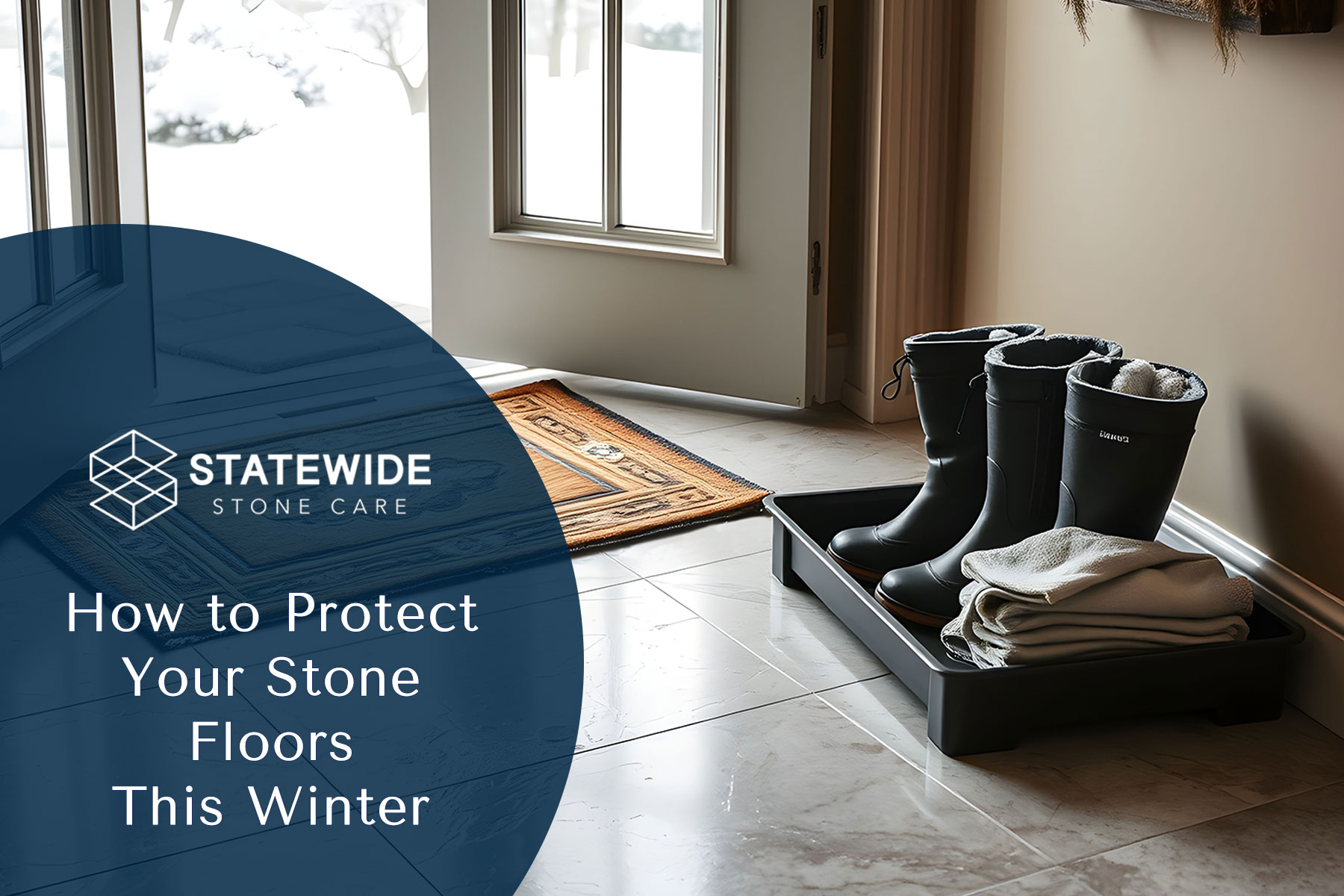Winter on the East Coast is back, bringing snow, rain, and slushy conditions that can pose a threat to your beautiful stone floors. The combination of sand, salt, and moisture can damage marble, granite, and other natural stone surfaces, leading to scratches, etching, and erosion. To help you maintain the elegance of your floors this season, we’ve compiled a few simple yet effective tips.
Prevent Damage from Shoes and Outdoor Debris
One of the biggest culprits of winter floor damage is the debris tracked in from outside. Snow, slush, and road salt can degrade the finish of your stone surfaces. Here’s how to minimize the impact:
• Encourage guests to remove their shoes. This simple step prevents sand and salt from grinding into the stone, reducing the risk of scratches and dulling. Consider providing a designated shoe rack or cozy slippers for guests to wear indoors to make this request more inviting.
• Use seasonal mats and rugs. If asking visitors to remove their shoes isn’t feasible, place durable, decorative rugs or mats near entryways. These help absorb moisture and trap debris before it reaches your floors. Opt for mats with rubber backings to prevent slipping and to provide extra protection against wet and muddy conditions.
• Wipe up spills immediately. Snow and ice melt can leave behind harmful residues that may stain or etch the stone. Keep a soft, absorbent cloth handy to quickly clean up any puddles. Regularly check for hidden damp spots near entryways and corners to prevent long-term damage from unnoticed moisture buildup.
Adopt a Smart Cleaning Routine
Winter weather might make you want to mop more frequently, but excessive moisture can actually make it harder to remove grit and dirt effectively. Instead, follow these steps:
• Wait until the floors are dry before cleaning. Wet mopping can push dirt deeper into the stone’s surface, potentially causing more harm. Instead, allow slush and dirt to dry before sweeping to prevent spreading grime across the floor.
• Use a soft broom or dry microfiber mop. Once the floor is dry, gently sweep away grit and dust to prevent abrasion. A microfiber mop is especially effective at trapping fine dust and particles that a traditional broom might leave behind.
• Opt for a pH-neutral stone cleaner. If deeper cleaning is needed, avoid acidic or harsh chemicals that could damage the stone’s finish. Using a mild, pH-balanced cleaner will help preserve the stone’s natural beauty while effectively removing grime and buildup.
Long-Term Protection for Your Stone Floors
In addition to daily maintenance, consider these strategies to keep your stone floors in pristine condition throughout the winter and beyond:
• Seal your stone surfaces. A high-quality stone sealant adds a protective barrier against moisture, stains, and grime. Reapplying sealant annually or as recommended by the manufacturer will enhance the durability of your stone floors.
• Schedule professional maintenance. If you notice dullness, scratches, or etching, a professional NYC stone care specialist can help restore your floors. Regular professional cleaning and polishing can extend the life of your stone surfaces and maintain their original shine.
The Importance of Professional Cleaning
Even with the best maintenance routine, professional cleaning is essential for keeping stone floors in top condition. Experts have the tools and knowledge to deep clean and polish stone surfaces without causing damage. Professional-grade sealants and treatments can enhance resistance against stains and wear, ensuring your floors remain in pristine shape. Regular deep cleaning also helps to remove hidden dirt and contaminants that household cleaning might not reach. Investing in periodic professional care will prolong the life and beauty of your stone flooring.
By taking these proactive steps, you can ensure your natural stone floors remain stunning despite the challenges of winter weather. If you have marble, granite, or other natural stone concerns and want to learn more about proper care, reach out to a stone care expert today!


